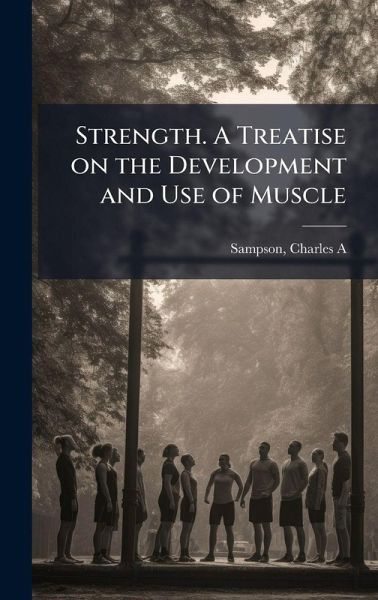
Strength. A Treatise on the Development and Use of Muscle
Versandkostenfrei!
Versandfertig in über 4 Wochen
30,99 €
inkl. MwSt.

PAYBACK Punkte
15 °P sammeln!
Strength: A Treatise on the Development and Use of Muscle, penned by C.A. Sampson and originally published in 1895, offers a fascinating glimpse into the world of late 19th-century physical culture. This book is a comprehensive guide to muscle development, providing readers with insights into the training methods and philosophies of the era. Sampson's work emphasizes not only the physical benefits of strength training but also its impact on overall health and well-being. Detailing various exercises and routines, the text serves as a practical manual for those seeking to improve their physical ...
Strength: A Treatise on the Development and Use of Muscle, penned by C.A. Sampson and originally published in 1895, offers a fascinating glimpse into the world of late 19th-century physical culture. This book is a comprehensive guide to muscle development, providing readers with insights into the training methods and philosophies of the era. Sampson's work emphasizes not only the physical benefits of strength training but also its impact on overall health and well-being. Detailing various exercises and routines, the text serves as a practical manual for those seeking to improve their physical condition. More than just a fitness guide, "Strength" reflects the social attitudes toward physical fitness at the time, making it a valuable resource for historians and anyone interested in the evolution of bodybuilding and exercise. This vintage volume provides a unique perspective on the pursuit of strength and physical excellence that continues to resonate today. This work has been selected by scholars as being culturally important, and is part of the knowledge base of civilization as we know it. This work was reproduced from the original artifact, and remains as true to the original work as possible. Therefore, you will see the original copyright references, library stamps (as most of these works have been housed in our most important libraries around the world), and other notations in the work. This work is in the public domain in the United States of America, and possibly other nations. Within the United States, you may freely copy and distribute this work, as no entity (individual or corporate) has a copyright on the body of the work. As a reproduction of a historical artifact, this work may contain missing or blurred pages, poor pictures, errant marks, etc. Scholars believe, and we concur, that this work is important enough to be preserved, reproduced, and made generally available to the public. We appreciate your support of the preservation process, and thank you for being an important part of keeping this knowledge alive and relevant.












